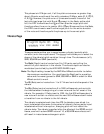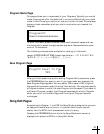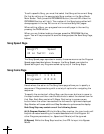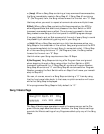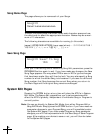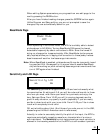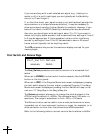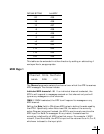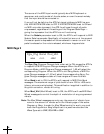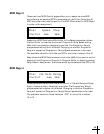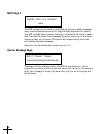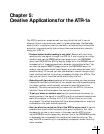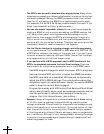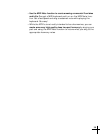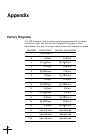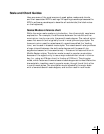
34
The source of the MIDI input would typically be a MIDI keyboard or
sequencer, and could consist of chords, scales, or even the exact melody
that the input should be corrected to.
If you will not be defining the ATR-1a’s target pitches via MIDI, be sure
that MIDI NOTE MODE is set to OFF. If MIDI NOTE MODE is set to ON and
no MIDI note data is present, the ATR-1a will pass through all audio
unprocessed, regardless of the settings of the Program Scale Page —
giving the impression that the ATR-1a is not functioning.
When the Sustain parameter is set to ON, the ATR-1a will respond to MIDI
Sustain Pedal commands. Specifically, all notes that are on at the moment
the sustain pedal is depressed will be considered to remain on until the
pedal is released or the note is released, whichever happens later.
MIDI Page 2
Pgm_Chg Bend Mod_Whl
aaa ccc ddd
The Pgm_Chg (Program Change) field, when set to ON, causes the ATR-1a
to respond to MIDI Program Change messages. When the ATR-1a is in
Program Mode, a MIDI Program Change message of 1–50 will select the
corresponding Program. When the ATR-1a is in Song Mode, a MIDI Pro-
gram Change message of 1–20 will select the corresponding Song. Pro-
gram Change messages outside of those ranges will have no effect.
When Bend is set to ON, the ATR-1a will respond to MIDI Pitch Bend
messages. The maximum range of pitch bend is from -200 to +200 cents
(plus or minus one whole step). This modification is applied in addition to
any pitch correction, vibrato or tuning.
When Mod_Whl (Mod Wheel) is set to ON, the ATR-1a will use MIDI Mod
Wheel messages to control the depth of modulation of any programmed
vibrato.
Note: The Mod Wheel messages can only vary the amount of vibrato from
none to the amount of vibrato set in the Vibrato page of the active
Program or Song. In order for Mod Wheel control to work, you must
have the Program’s or Song’s Depth set to a positive value and the
Wave Type set to SINE, SQUARE or SAW.



